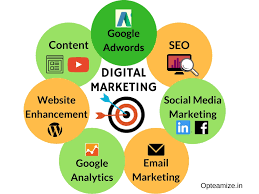Whether you’re running an e-commerce store, managing a small business, or simply sending a gift to a friend, finding the right shipping services is crucial. With so many carriers and options available, choosing the best shipping method can feel overwhelming—but it doesn’t have to be.
In this blog, we’ll break down the different types of shipping services, what factors to consider, and how to make smart, cost-effective decisions for both personal and business shipping needs.
What Are Shipping Services?
Shipping services refer to the companies and methods used to move goods from one location to another. This can include local couriers, national postal services, freight carriers, and international logistics providers.
Shipping services cover a range of tasks including:
- Picking up packages
- Transporting goods by land, air, or sea
- Tracking deliveries
- Managing customs for international shipments
- Handling returns and customer support
Types of Shipping Services
Shipping needs vary by volume, urgency, and destination. Here are the most common types:
1. Standard Shipping
- Typically the most cost-effective option
- Ideal for non-urgent deliveries
- Delivery time ranges from 3 to 7 business days
2. Express or Expedited Shipping
- Faster delivery (usually 1–2 business days)
- More expensive than standard options
- Good for urgent or time-sensitive items
3. Same-Day or Next-Day Delivery
- Extremely fast and often used for local deliveries
- Best for perishables, medical items, or high-priority packages
4. Freight Shipping
- For large, heavy, or bulk items
- Includes LTL (less-than-truckload), FTL (full-truckload), and pallet shipping
- Used in B2B or large-scale logistics
5. International Shipping
- Moves goods across borders
- Involves customs paperwork, duties, and taxes
- Requires tracking and reliable delivery partners
6. Dropshipping & Fulfillment Services
- Used by e-commerce stores to ship directly from supplier to customer
- Managed by third-party logistics (3PL) providers or fulfillment centers
Factors to Consider When Choosing a Shipping Service
Not all shipping services are created equal. Here’s what to evaluate:
- Delivery Speed – How quickly does the package need to arrive?
- Cost – Are you shipping on a budget, or is speed more important?
- Package Size and Weight – Heavier or bulkier items may require freight shipping.
- Destination – Domestic or international? Urban or rural?
- Tracking and Transparency – Can you monitor the shipment in real time?
- Customer Support – How well does the company handle issues or delays?
- Insurance and Guarantees – Is the shipment protected against damage or loss?
Top Shipping Service Providers
While options vary by region, here are some of the most widely used providers:
- USPS (United States Postal Service) – Affordable, great for lightweight domestic shipments.
- UPS – Reliable ground and express services, strong global network.
- FedEx – Known for fast delivery and international logistics.
- DHL – A leader in international shipping, especially in Europe and Asia.
- Local Couriers – Great for same-day and local deliveries.
- 3PL Providers – Handle warehousing, fulfillment, and shipping for e-commerce brands.
How Shipping Impacts Business
For businesses, especially those in retail or e-commerce, shipping is more than just a logistics function—it’s part of the customer experience.
- Faster shipping leads to higher customer satisfaction.
- Affordable rates improve profitability.
- Clear tracking reduces customer support issues.
- Flexible return options build trust.
Choosing the right shipping partner can directly impact your brand’s reputation and customer loyalty.
Define Your Shipping Needs
Before selecting a provider, ask yourself:
- How often do I ship?
- Are the packages small, large, or bulky?
- Do I need domestic, international, or both?
- How fast do items need to arrive?
- Do I need tracking, insurance, or signature on delivery?
Knowing your needs helps narrow your choices.
Understand the Types of Shipping Services
Here’s a recap of the major types:
- Standard Shipping – Affordable, non-urgent
- Express Shipping – Faster, but more expensive
- Freight Shipping – For large/heavy/bulk items
- Same-Day or Local Courier – Best for local and urgent deliveries
- International Shipping – Includes customs handling and documentation
Compare Popular Shipping Providers
| Provider | Best For | Key Features |
|---|---|---|
| USPS | Personal, e-commerce | Affordable, flat-rate boxes, wide domestic reach |
| UPS | Business shipping | Strong tracking, fast delivery, international reach |
| FedEx | E-commerce & express | Reliable express service, global presence |
| DHL | International | Fast international shipping, customs expertise |
| Local Couriers | Same-day or city-wide | Personalized service, flexible pickups |
Look for Must-Have Features
No matter who you ship with, here are essential features to look for:
- Tracking & Notifications
- Delivery Guarantees or Insurance
- Clear Pricing with No Hidden Fees
- Customer Support Availability
- Online Booking & Label Printing
- API Integration (for businesses or online stores)
Don’t Forget About Returns
An easy and efficient return process is crucial for e-commerce brands. Make sure your shipping partner can:
- Offer prepaid return labels
- Handle reverse logistics
- Notify you when items are returned
Tips to Save on Shipping Costs
- Use flat-rate boxes for heavier items
- Negotiate rates if you ship frequently
- Compare carriers based on package size/destination
- Consolidate shipments to save on bulk deliveries
- Print labels online to get discounted rates
When to Use a Third-Party Shipping Partner
If you’re scaling fast or need more automation, consider:
- Third-Party Logistics (3PL) – Outsource your storage, packing, and shipping
- Fulfillment Centers – Like Amazon FBA, ShipBob, or Easyship
- Shipping Software – Tools like ShipStation or Pirate Ship let you compare rates, print labels, and automate shipping workflows
Final Thoughts
Shipping services play a vital role in both personal and business life. Whether you’re sending a care package or managing hundreds of online orders, understanding your options can save time, reduce costs, and improve outcomes.
Evaluate your needs carefully, compare providers, and always look for a balance between speed, reliability, and price.












Leave a Reply